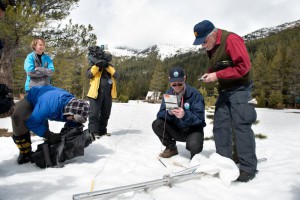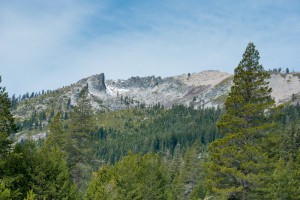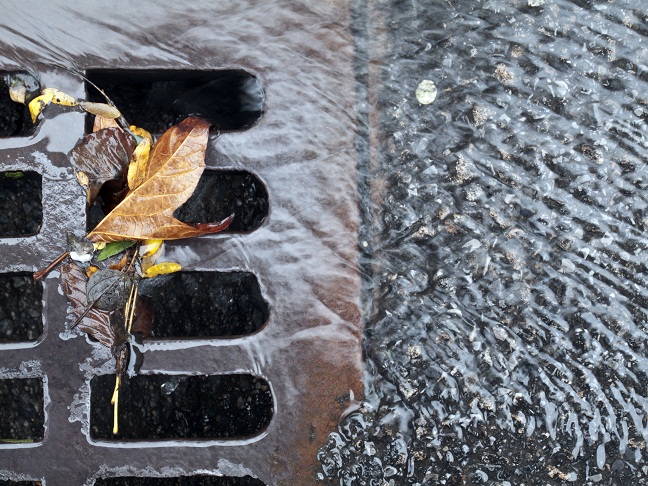

Above: The California Department of Water Resources conducts a snow survey at Phillips Station on March 28, 2013. Below: Conducted on April 1, 2015, this year’s snow survey shows the effects of below-normal precipitation combined with unusually warm weather. Images from the Office of Governor Edmund G. Brown Jr.
On April 1, following the lowest snowpack ever recorded in California and with no end to the drought in sight, Gov. Edmund Brown announced the first-ever statewide mandatory water reductions.
According to National Aeronautics and Space Administration satellites, as reported in the Los Angeles Times, California has just one year of water supply in its surface reservoirs, and groundwater is disappearing rapidly. Once about a third of the state’s water supply, groundwater now accounts for about 75%.
The governor has directed the State Water Resources Control Board to implement mandatory water-reduction in cities and towns across California with the goal of reducing water usage by 25%. These savings should amount to approximately 1.85 million megaliters (1.5 million ac-ft) of water over the next 9 months. The restrictions will require campuses, golf courses,
cemeteries, and other large landscapes to make significant cuts in water use. Some critics say that the order goes easy on California’s largest water user: agriculture. However, farmers have already borne much of the brunt of the drought. The Los Angeles Times reported that in 2014, farmers left more than 162,000 ha (400,000 ac) unplanted, costing the state’s agricultural economy $2 billion.
Agricultural water users will be required to report more water use information to state regulators. The governor’s order also strengthens standards for Agricultural Water Management Plans submitted by large agriculture water districts and requires small agriculture water districts to develop similar plans.
The actions announced by Brown are intended to save water, increase enforcement to prevent wasteful water use, streamline the state’s drought response, and invest in new technologies that will make California more drought resilient.
Last year, the Brown administration proclaimed a drought state of emergency. On March 27, Brown also signed emergency legislation — AB 91 and AB 92 ― that fast-tracks more than $1 billion in funding for drought relief and critical water infrastructure projects. The funding is intended to accelerate emergency food aid, drinking water, water recycling, conservation awareness, water system modeling, species tracking, and infrastructure and flood protection.
Other state actions specified in the April 2 order include a rebate program for water-efficient appliance upgrades, xeriscaping 4.6 million m2 (50 million ft2) of lawns, banning ornamental grass watering in public street medians, and prohibiting potable water irrigation in new homes and developments unless water-efficient drip irrigation is used. Additionally, the governor’s order calls on local water agencies to adjust their rate structures to implement conservation pricing, recognized as an effective way to realize water reductions and discourage water waste. Read about additional actions and government response.





